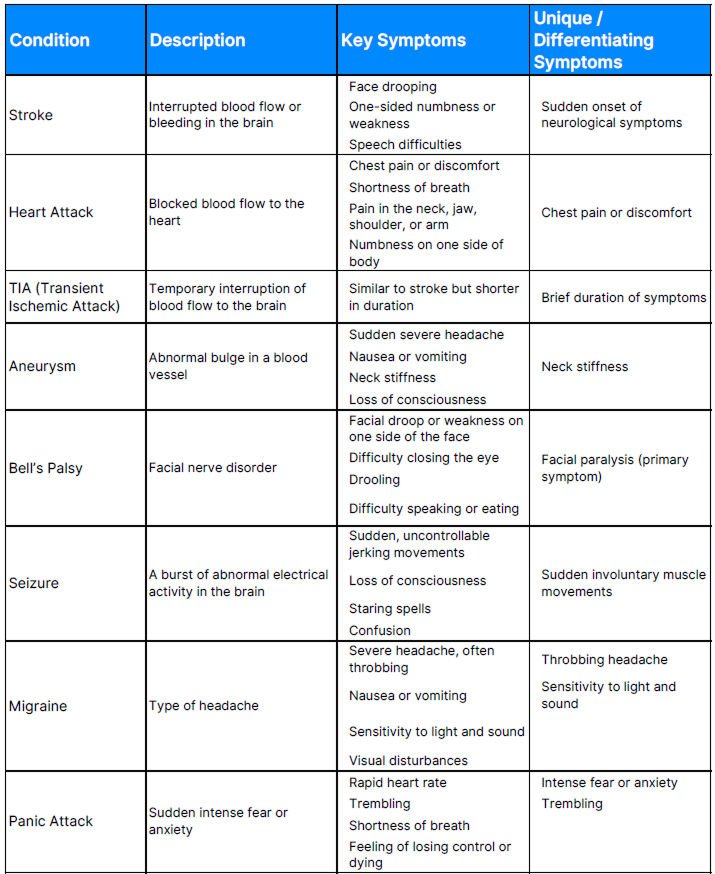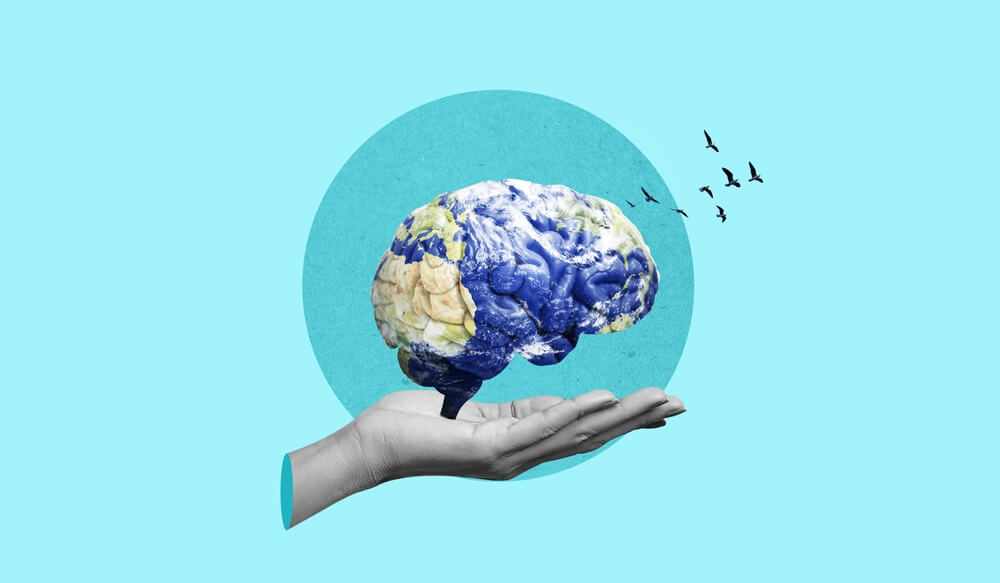
Is It a Stroke or Something Else?


Not everything in life is as it seems, and this can include stroke symptoms. If you experience sudden weakness, vision changes, or speech difficulties, your first thought might be that you’re having a stroke. But it could actually be a stroke mimic—a health condition that mirrors a stroke.
Stroke mimics are “common among suspected stroke patients,” with one study finding that “one out of four ischemic stroke unit admissions… could be avoided.”
The medical team at Aviv Clinics is committed to demystifying strokes and stroke mimics so you can avoid misdiagnosis and get the right assistance faster. Our goal is to empower you with the knowledge and tools you need to recover and live a fulfilling life.
If you or a loved one experiences any of the potentially life-threatening symptoms discussed below, call 911 right away.
Stroke vs. Heart Attack
Strokes and heart attacks are both serious medical conditions that can be life-altering. While they share some similarities, they are distinct conditions with different causes.
A stroke occurs when blood flow to the brain is interrupted by a blood clot (ischemic stroke) or when a ruptured blood vessel bleeds into the brain (hemorrhagic stroke).
Symptoms of an ischemic or hemorrhagic stroke can include:
- Face drooping
- Arm weakness
- Speech difficulties
- Vision changes
- Sudden numbness on one side of the body
- Confusion
- Severe headache
- Seizures
- Brief loss of consciousness
- Nausea or vomiting
- Chest pain
- Fatigue
- Shortness of breath
- Racing heartbeat
- Hiccups
A stroke happens in the brain, whereas a heart attack (also known as myocardial infarction) occurs in the heart. A heart attack happens when blood flow to the heart muscle is blocked. This usually occurs due to a blood clot.
Heart attack symptoms include:
- Chest pain or discomfort
- Shortness of breath
- Numbness or weakness, usually on one side of body
- Pain in the neck, jaw, shoulder, or arm
- Nausea or vomiting
- Sweating
- Lightheadedness or fainting
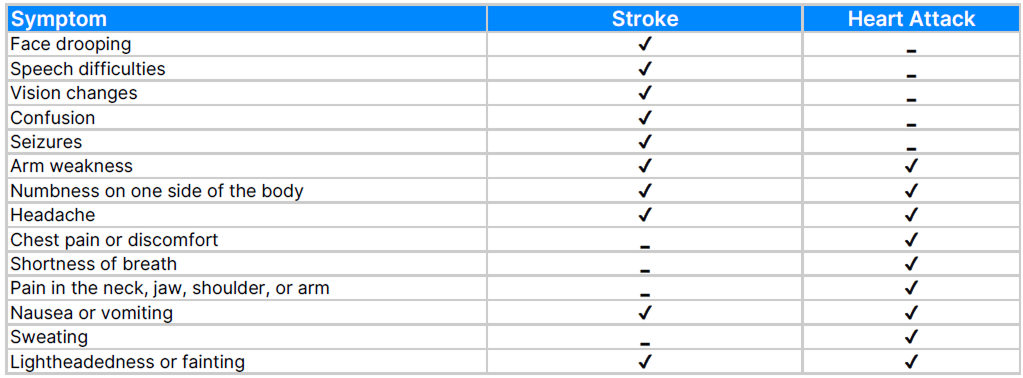
Stroke vs. TIA (Transient Ischemic Attack)
Not all strokes are created equal. Transient ischemic attacks (TIAs), also called mini-strokes, are a brief type of stroke whose effects typically last less than an hour and completely resolve within 24 hours. They’re caused by a temporary obstruction of blood flow to the brain.
TIAs are less likely to cause significant mental and physical impairment but they are often precursors to experiencing full strokes and a sign you may need to take preventative measures against a more serious stroke.

Read more about stroke and mini-stroke symptoms to watch for.
Stroke vs. Aneurysm
While a stroke occurs in the brain, an aneurysm can occur anywhere in the body. An aneurysm is an abnormal bulge in a blood vessel (most commonly in an artery rather than a vein).
An aneurysm can be particularly dangerous as it can significantly damage areas responsible for functions like speech, movement, and vision, contributing to neurological deficits.
A variety of factors, including high blood pressure, smoking, and genetic predisposition, can trigger aneurysms. The artery wall weakens, causing it to widen or bulge.
Symptoms depend on where in your body the aneurysm occurs. For example:
- Abdominal aortic aneurysms often cause pain in the abdomen, chest, lower back, or groin area.
- Cerebral aneurysm may cause sudden severe headache, nausea, vomiting, visual disturbance, and/or loss of consciousness. Many also experience a stiff neck, a drooping eyelid, and pain above or behind the eye. This type of aneurysm is the most likely to have overlapping symptoms with stroke.
- Common iliac aneurysms can cause lower abdominal, back, and/or groin pain. They can often be deadly if ruptured.
- Femoral and popliteal artery aneurysms usually create a pulsing sensation in the groin area or on the back of the knee and/or pain in the leg. They may also lead to sores on the feet or lower legs.
Symptoms tend to be more severe and extensive if the aneurysm has ruptured. Aneurysms can also be asymptomatic.
Both stroke and cerebral aneurysm are medical emergencies that can cause varied neurological symptoms depending on where in the brain they occur. Because there is so much potential overlap in their symptoms, they can be particularly hard to differentiate, and a medical examination is essential to determine which condition you have.
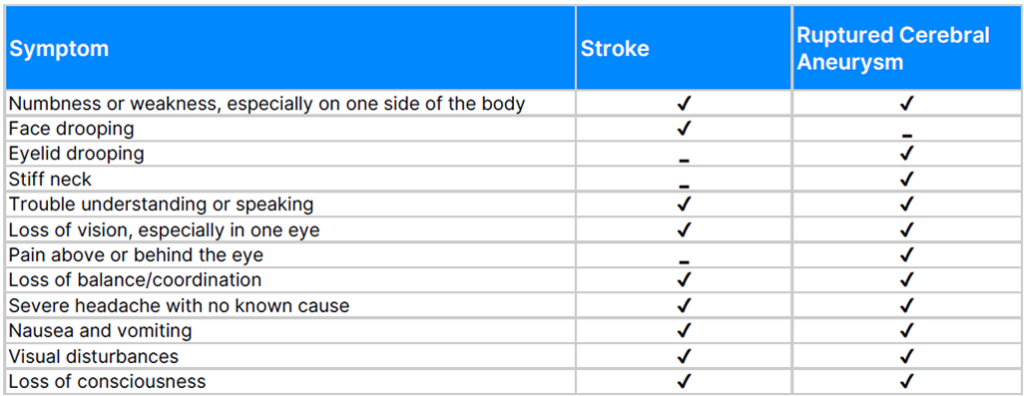
Stroke vs. Bell’s Palsy
Facing sudden facial paralysis can be alarming and confusing—especially if you mistake it for a stroke. Bell’s palsy is a condition that affects the facial nerve, causing temporary weakness or paralysis on one side of the face. While it can be frightening, your symptoms don’t necessarily indicate a stroke.
While a stroke happens in the brain, Bell’s palsy occurs in the face. The facial nerve swells and becomes inflamed. The exact cause of Bell’s palsy is unclear, but conditions that might trigger it include:
- HIV/AIDS infection
- Lyme disease
- Middle ear infection
- Sarcoidosis (inflammation of the lymph nodes, lungs, liver, eyes, skin, or other tissues)
Symptoms are usually on one side of the face and can range from mild to severe. Other signs include:
- Difficulty closing one eye
- Drooling due to lack of muscle control
- Challenges in making facial expressions
- Twitching or weakness in facial muscles
- Discomfort behind the ear (usually happens before facial paralysis)
While stroke and Bell’s palsy are distinct conditions, research suggests those with Bell’s palsy have an increased risk of experiencing ischemic stroke.
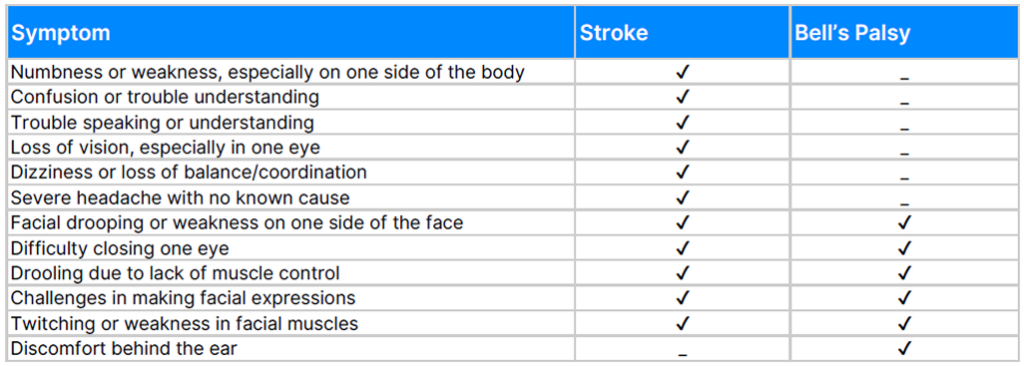
Stroke vs. Seizure
Both strokes and seizures occur in the brain, causing multiple neurological symptoms. However, seizures are caused by electrical disturbances in the brain. Epilepsy, brain injuries, infections, and metabolic disorders can all contribute to the development of seizures.
Symptoms of seizures include:
- Sudden confusion or trouble understanding
- Trouble speaking
- Involuntary movements in the arms or legs
- Stiffening or shaking of the body
- Spells of unresponsiveness or behavioral shifts (e.g., the person has challenges communicating or remembering things)

Stroke vs. Migraine
Strokes and migraines are conditions that both occur in the brain and share similar symptoms, particularly headaches.
While migraines can be severe, they are not typically life-threatening. Strokes, on the other hand, are a medical emergency that can have more serious long-term complications.
Specific migraine symptoms include:
- Throbbing pain on one side of the head
- Sensitivity to light and sound
- Nausea and vomiting
- Visual disturbances (seeing flashes of light)
- Fatigue
- Mood changes
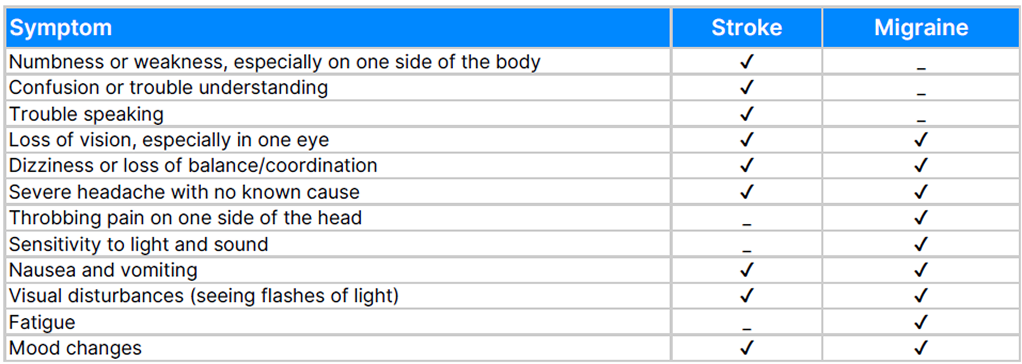
Stroke vs. Panic Attack
Strokes and panic attacks can both cause sudden and alarming symptoms, making it difficult to distinguish between them. However, strokes are medical emergencies involving damage to the brain, while panic attacks have psychological causes and result in no physical damage.
Panic attacks are sudden episodes of intense fear or anxiety that can cause a variety of physical symptoms, including:
- Rapid heartbeat
- Sweating
- Trembling
- Shortness of breath
- Chest pain or discomfort
- Nausea or upset stomach
- Feeling dizzy or lightheaded
- Fear of losing control or dying
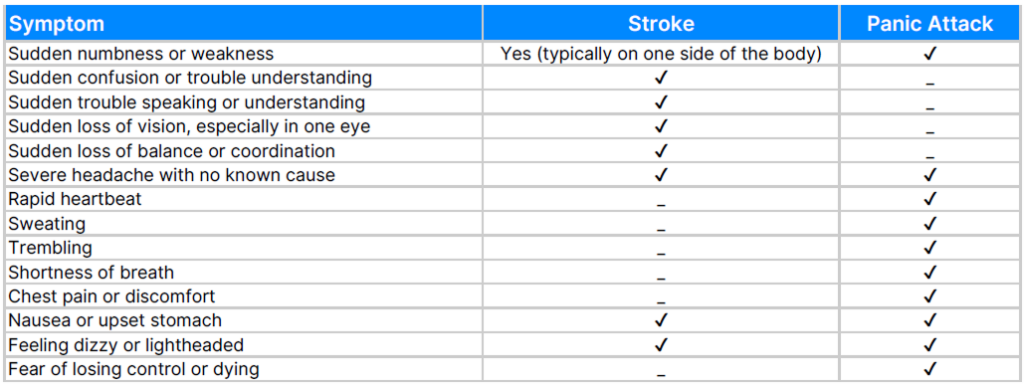
Empower Your Health Journey with Expertise & Compassion
Both strokes and stroke mimics can be life-altering experiences. Understanding your condition is essential, and it’s easy to feel confused and overwhelmed by the barrage of information available on the internet.
At Aviv Clinics, our team is here to offer clear, compassionate guidance and support. We encourage you to learn more about strokes and other health conditions to feel confident in taking the right steps, no matter where you are in your wellness journey.
If you or a loved one has had a stroke, we hope you take advantage of these resources to aid you in the post-stroke recovery process:
- Post-Stroke Treatment
- The Aviv Medical Program for Stroke Recovery
- Hyperbaric Oxygen Therapy (HBOT) and Stroke
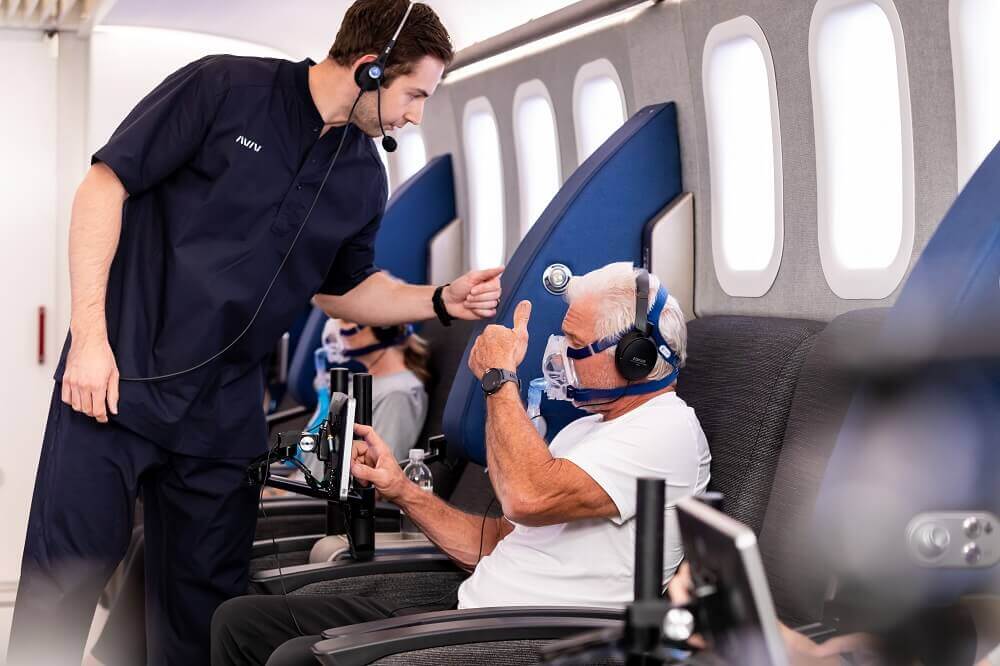
Stoke vs. Health Conditions at a Glance
